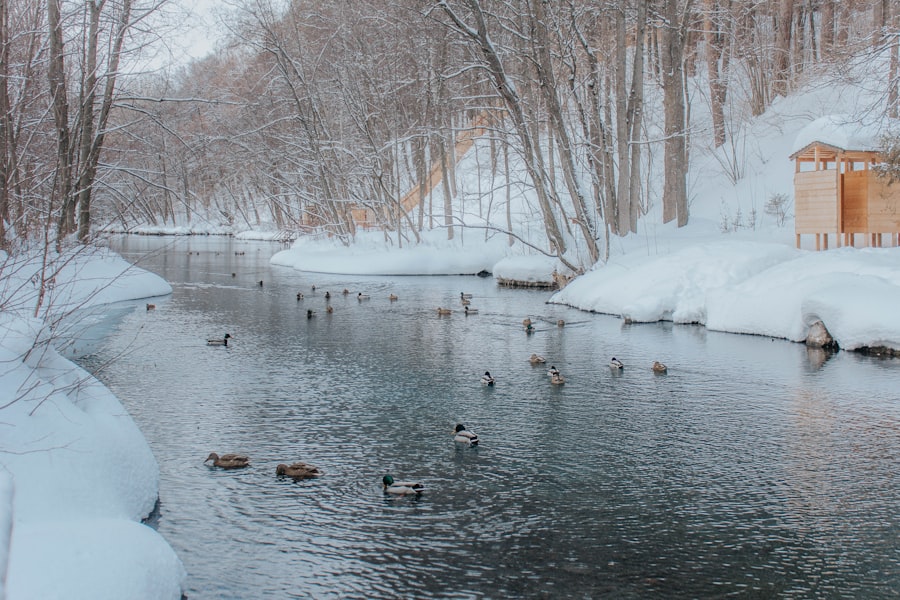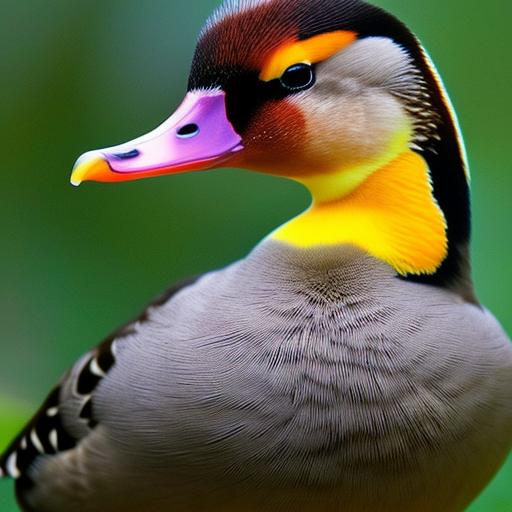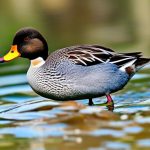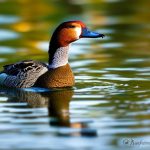Rare breeds of ducks are unique and distinct varieties of ducks that are not commonly found in mainstream agriculture or domestication. These breeds have often been overshadowed by more popular and commercially viable breeds, leading to a decline in their numbers and a risk of extinction. However, they possess their own set of characteristics and qualities that make them worth learning about and preserving.
Learning about rare breeds of ducks is important because it helps to maintain biodiversity and genetic diversity within the duck population. Each breed has its own set of traits, such as size, coloration, and behavior, which contribute to the overall diversity of the species. By understanding and preserving these rare breeds, we can ensure that future generations have access to a wide range of genetic material that can be used for breeding programs and conservation efforts.
Key Takeaways
- Rare breeds of ducks are important to preserve for genetic diversity and cultural heritage.
- Characteristics of rare breeds include unique feather patterns, colors, and sizes.
- Many rare breeds have a long history and cultural significance in their countries of origin.
- Challenges in breeding and raising rare breeds include limited availability and higher costs.
- Supporting the preservation of rare breeds can be done through education, advocacy, and purchasing from responsible breeders.
The Importance of Preserving Rare Breeds
Preserving rare breeds of ducks is crucial for several reasons. Firstly, these breeds often possess unique traits and characteristics that can be beneficial for various purposes. For example, some rare breeds may be more resistant to certain diseases or have better foraging abilities, making them valuable for sustainable farming practices. By preserving these breeds, we can tap into their genetic potential and use them to improve the overall health and productivity of duck populations.
Secondly, preserving rare breeds helps to maintain biodiversity within the duck population. Biodiversity is essential for the long-term survival of any species as it ensures that there is a wide range of genetic material available to adapt to changing environmental conditions. By preserving rare breeds, we are safeguarding the genetic diversity of ducks and reducing the risk of inbreeding and genetic disorders.
Lastly, preserving rare breeds is important for cultural and historical reasons. Many rare breeds have a long history and are deeply rooted in local traditions and customs. By preserving these breeds, we are also preserving a part of our cultural heritage and ensuring that future generations can learn about and appreciate the diversity of ducks.
Characteristics of Rare Breeds of Ducks
Rare breeds of ducks can vary greatly in terms of their physical and behavioral characteristics. Some breeds may be larger or smaller in size, have unique color patterns, or possess distinct behavioral traits. For example, the Silver Appleyard breed is known for its large size and striking plumage, while the Indian Runner breed is famous for its upright stance and ability to run rather than waddle.
In terms of behavior, rare breeds may exhibit different foraging habits, mating behaviors, or social dynamics compared to more common breeds. Some breeds may be more independent and self-sufficient, while others may be more social and reliant on human interaction. Understanding these characteristics can help farmers and breeders choose the right breed for their specific needs and preferences.
History and Origin of Rare Breeds
The history and origin of rare breeds of ducks can vary depending on the specific breed. Some rare breeds have a long history that dates back centuries, while others are relatively new creations. Many rare breeds have their origins in specific regions or countries, where they were developed for specific purposes such as meat production, egg-laying, or ornamental purposes.
For example, the Aylesbury breed originated in England in the 18th century and was primarily bred for its meat. The breed gained popularity due to its large size and tender meat, but its numbers declined with the rise of commercial duck farming. Similarly, the Cayuga breed originated in the United States in the mid-19th century and was named after Cayuga Lake in New York. It was initially bred for its meat and feathers but is now primarily kept for ornamental purposes.
Unique Features of Rare Breeds of Ducks
Rare breeds of ducks possess unique features that set them apart from more common breeds. These features can include physical characteristics such as size, coloration, and plumage patterns, as well as behavioral traits such as foraging habits and social dynamics.
One example of a rare breed with unique features is the Crested breed. As the name suggests, these ducks have a distinctive crest of feathers on their heads, which gives them a unique and eye-catching appearance. Another example is the Call breed, which is known for its small size and high-pitched voice. These ducks are often kept for their ornamental value and are popular in exhibitions and shows.
Challenges in Breeding and Raising Rare Breeds

Breeding and raising rare breeds of ducks can come with its own set of challenges. One of the main challenges is the limited availability of breeding stock. Since rare breeds have smaller populations, finding quality breeding stock can be difficult. This can lead to inbreeding and a decline in genetic diversity if not managed properly.
Another challenge is the lack of knowledge and expertise in breeding and raising rare breeds. Many farmers and breeders may be more familiar with common breeds and may not have the necessary skills or resources to successfully raise rare breeds. This can result in poor breeding outcomes or inadequate care for the ducks.
To overcome these challenges, it is important to establish networks and communities of breeders who specialize in rare breeds. These networks can provide support, advice, and resources to help breeders navigate the unique challenges of raising rare breeds. Additionally, education and training programs can be implemented to improve the knowledge and skills of farmers and breeders in managing rare breeds.
Popular Rare Breeds of Ducks
There are several popular rare breeds of ducks that are well-known for their unique characteristics and qualities. One such breed is the Muscovy duck, which is native to South America but has been domesticated for centuries. Muscovy ducks are known for their large size, meat quality, and ability to fly. They are also popular for their ability to control pests, as they eat insects and small rodents.
Another popular rare breed is the Rouen duck, which originated in France and is named after the city of Rouen. Rouen ducks are known for their large size and beautiful plumage, which resembles that of a wild Mallard. They are primarily kept for ornamental purposes but can also be raised for meat production.
Lesser-known Rare Breeds of Ducks
While some rare breeds of ducks are well-known and recognized, there are also many lesser-known breeds that are worth learning about. These breeds may have unique characteristics and qualities that make them interesting and valuable for various purposes.
One such breed is the Swedish Blue duck, which is native to Sweden and is known for its striking blue plumage. These ducks are primarily kept for ornamental purposes but can also be raised for meat and egg production. Another lesser-known breed is the Hook Bill duck, which originated in England and is named after its distinctive hooked bill. These ducks are known for their friendly and docile nature, making them popular as pets or for exhibition purposes.
Rare Breeds of Ducks in Danger of Extinction
Unfortunately, many rare breeds of ducks are in danger of extinction due to various factors such as declining populations, loss of habitat, and lack of awareness and support. Some breeds may have become rare due to changes in farming practices or shifts in consumer preferences towards more commercially viable breeds.
One example of a rare breed in danger of extinction is the Silver Bantam duck, which is native to the United Kingdom. This breed has a small population and is at risk due to lack of breeding stock and limited interest from farmers and breeders. Another endangered breed is the Crested Miniature duck, which is known for its unique crest of feathers on its head. This breed has a small population and is at risk due to lack of awareness and support.
How to Support the Preservation of Rare Breeds of Ducks
There are several ways to support the preservation of rare breeds of ducks. One way is to educate yourself and others about the importance of preserving these breeds and the unique qualities they possess. By spreading awareness and knowledge, you can help generate interest and support for rare breeds.
Another way to support preservation efforts is to actively participate in breeding programs or conservation initiatives. This can involve breeding and raising rare breeds yourself or supporting organizations and institutions that are dedicated to preserving rare breeds. By getting involved, you can contribute to the preservation of these breeds and help ensure their long-term survival.
Additionally, supporting local farmers and breeders who specialize in rare breeds is another way to make a difference. By purchasing products or animals from these individuals, you are providing them with financial support and encouraging the continuation of their breeding programs.
There are also resources available for learning more about rare breeds of ducks and how to get involved in preservation efforts. Online forums, websites, and books can provide valuable information and guidance on breeding, raising, and preserving rare breeds. Additionally, organizations such as the Livestock Conservancy or local breed associations can provide resources, support, and networking opportunities for individuals interested in preserving rare breeds.
In conclusion, rare breeds of ducks are unique and valuable varieties that deserve attention and preservation. By understanding their characteristics, history, and challenges, we can appreciate their importance and contribute to their long-term survival. Whether through education, participation in breeding programs, or supporting local farmers and breeders, we all have a role to play in preserving these rare breeds for future generations.
If you’re interested in rare breeds of ducks, you might also want to check out this informative article on poultrywizard.com about converting a shed into a chicken coop. It provides valuable insights and tips on how to repurpose existing structures to create a comfortable and functional space for your feathered friends. Whether you’re a beginner or an experienced poultry keeper, this article offers practical advice that can help you make the most of your resources while ensuring the well-being of your rare duck breeds. Read more here.
FAQs
What are rare breeds of ducks?
Rare breeds of ducks are domesticated ducks that are not commonly found in commercial farms or backyard flocks. These breeds are often endangered or at risk of extinction due to low population numbers.
What are some examples of rare breeds of ducks?
Some examples of rare breeds of ducks include the Silver Appleyard, Saxony, Ancona, Magpie, and Cayuga ducks.
Why are rare breeds of ducks important?
Rare breeds of ducks are important because they contribute to genetic diversity and help preserve the genetic heritage of domesticated ducks. They also have unique characteristics and traits that make them valuable for breeding and showing.
How can I help preserve rare breeds of ducks?
You can help preserve rare breeds of ducks by supporting conservation efforts, purchasing rare breed ducks from reputable breeders, and participating in breeding and showing programs. You can also spread awareness about the importance of preserving genetic diversity in domesticated animals.
Are rare breeds of ducks suitable for backyard flocks?
Yes, rare breeds of ducks can be suitable for backyard flocks as long as they are properly cared for and provided with appropriate living conditions. However, some rare breeds may have specific needs or require more attention than common breeds, so it is important to do research before adding them to your flock.
Meet Walter, the feathered-friend fanatic of Florida! Nestled in the sunshine state, Walter struts through life with his feathered companions, clucking his way to happiness. With a coop that’s fancier than a five-star hotel, he’s the Don Juan of the chicken world. When he’s not teaching his hens to do the cha-cha, you’ll find him in a heated debate with his prized rooster, Sir Clucks-a-Lot. Walter’s poultry passion is no yolk; he’s the sunny-side-up guy you never knew you needed in your flock of friends!







